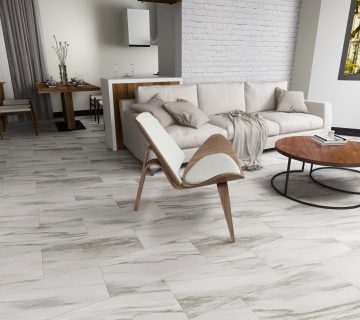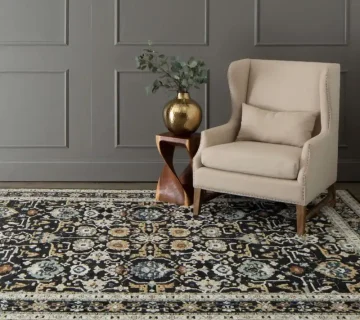If you are going to be installing Pergo flooring yourself, the following are some brief tips from a do-it-yourself home owner just like you!
Installing Pergo flooring in your home can be a great, low cost, home improvement decision. It is fairly durable, extremely easy to clean, and installing Pergo flooring is easy. The look is welcoming, providing any area in your home with a warm look and feel of wood. You have a wide array of colors and styles to choose from, so you will certainly find something to suit your home’s needs.
To begin, you will need specific tools and supplies begin installing Pergo flooring in your home. There are two types of flooring offered, glue and glueless. No matter what type of flooring you choose to install, you will need a plastic vapor barrier, a saw, and padding. If you choose the glue model, you will need other supplies, such as tightening straps and tapping block.
Before you begin installing Pergo flooring, there are numerous home improvement classes offered at a regular basis for no charge at home improvement stores. Its highly recommended that you take a class to familiarize yourself with the common problems and issues you will encounter. You will be able to learn firsthand how to install the floor, and you will be able to ask an installation expert any questions you may have regarding installing Pergo flooring. Plus, all the supplies you will need when installing Pergo flooring are there in the class.
You can plan on installing Pergo flooring over cement, tile, vinyl, or in place of carpet. The planks should be installed over special, specific padding to help with noise as well as a vapor barrier (especially if you install over concrete) to keep moisture out. These are all things you need to discuss with your home improvement supplier.
Measure the rooms and get your square footage before you go to a class or to pick out the material. You will be able to bring home samples to help you decide on the color of your new floors if needed. At this time, plan the direction that the wood planks should lay. When installing Pergo flooring in a narrow or long room, lay it down lengthwise; or, if you are installing the flooring in a room with a large window, lay it feeding towards the window.
One of the first steps you take after you have brought home the materials is to let the boxes sit open in the room you plan on installing Pergo flooring in for at least 48 hours. If you live in or will be installing Pergo flooring in an area of extremely high or low humidity, you should let the open box sit for up to 96 hours exposing the wood materials to the room’s environment. Allowing the box to sit allows the material to get acclimated, and will decrease the chances for swelling and/or shrinking once you complete the job.
When you install Pergo flooring, you are creating a floating floor. The planks should not be glued or secured to the subfloor in anyway to allow for movement with humidity and temperature. (The expansion distance is 1/4 inch in normal climates). This is important to note in areas you are installing like at corners, angles and openings such as doorways.
Two essential installation supplies when using a glue system are the tapping block and the tightening straps. These are used to make sure the pieces of flooring are connected tightly and smoothly with less gapping. Before adding glue, lay the first three rows down to see what the floor will look like and if the pieces will fit. If you have a board close (less than 2″) to the wall (or end of spatial area), rearrange the first pieces to make them all fit.
Installing laminate floor in your home is a big task, but a very rewarding one. Upkeep of the surface is easy and there are specific details and instructions on maintenance and damage repair to these types of floors once you have them installed. For more reading, check out the information below.




